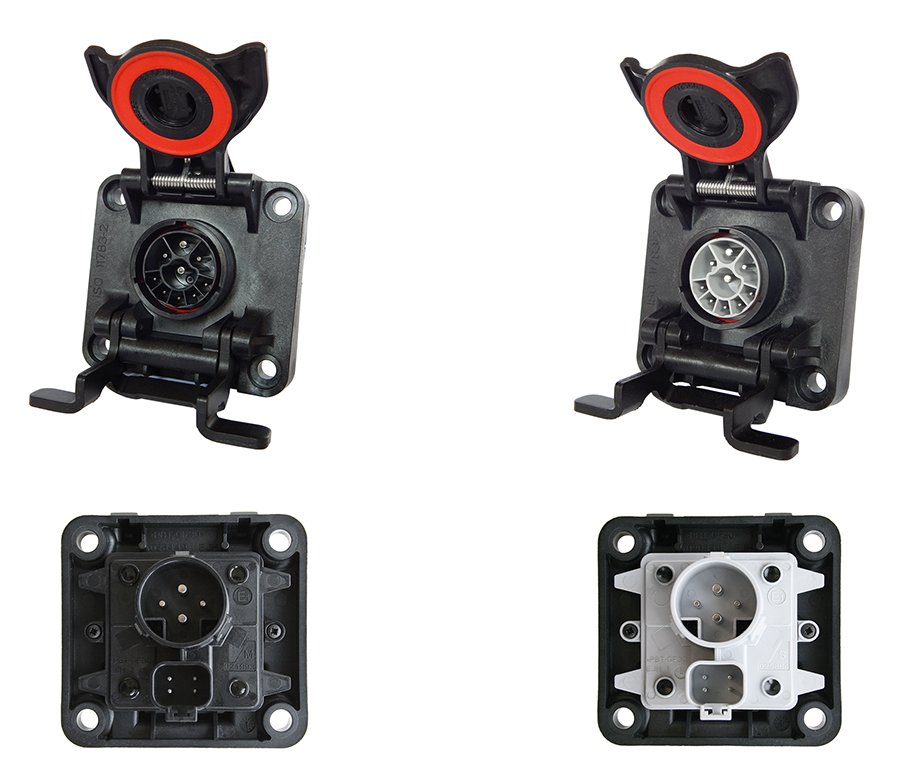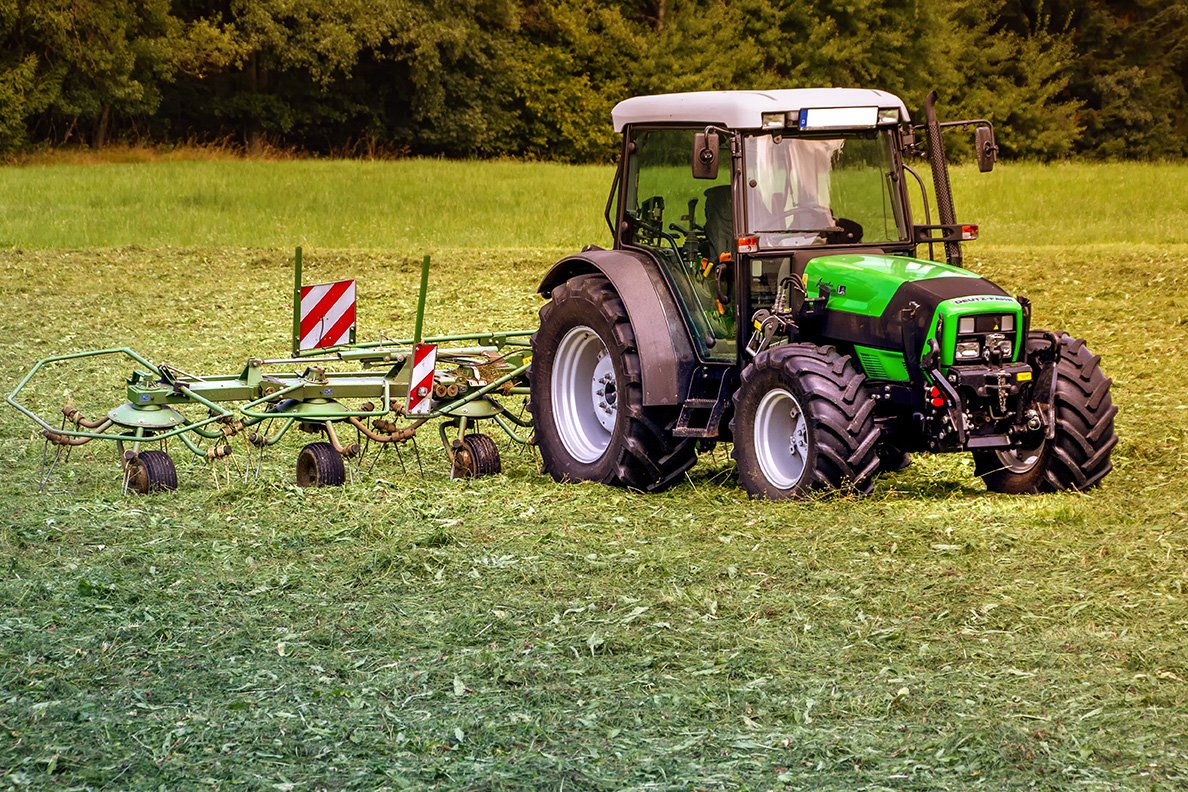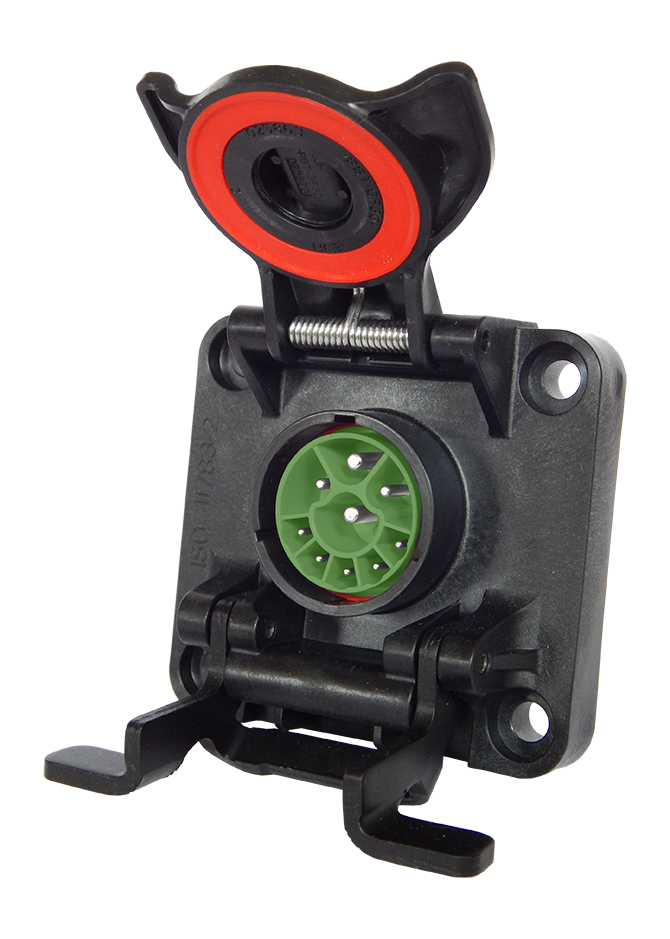
What is ISOBUS?
The ISOBUS standard (defined in the ISO 11783 standard series) has ensured manufacturer-independent compatibility between tractors, accessory equipment, and agricultural software on office PCs since 1991.
Founded in 2008, the Agricultural Industry Electronics Foundation (AEF) is actively promoting this topic in order to further develop this common international standard at all levels—and to optimize communication and data exchange. It brings together different manufacturers of agricultural machinery and components. The compatibility of new components is checked, their conformity tested, and new standards are thus defined. These concern all relevant components of the supply and communication chain—from common interfaces and transmission protocols to uniform hardware. The AEF thus defines the basis for the products’ certification according to the ISOBUS specifications and enables compatibility between different manufacturers’ components.
ERICH JAEGER is an AEF member. As part of a subgroup that focuses on developing and standardizing connectors, it works to consistently push ISOBUS development along.
The ISOBUS Breakaway Connector (IBBC) for smooth connections
ISOBUS is tucked away in many components and various functions. These can therefore also be used across devices. And this is the only way the desired plug-and-play works.
With its 9-pin plug sets, components, and 9P/12V ISOBUS (IBIC) cables, Erich Jaeger covers the entire spectrum of the ISOBUS Breakaway Connector (IBBC). In developing the connector system, the company was guided by the specifications of several well-known agricultural machinery manufacturers. The system thus meets very high requirements in terms of temperature resistance (from -40°C to +95°C), environmental and medium-based influences, electromagnetic interference, and short-circuit protection.
This guarantees functionality even in extreme situations. All connectors and cables comply with ISO 11783-2. The various model variants include, for example, active and passive sockets as described in the standard.
Terminator circuit supply for master sockets
In accordance with ISO 11783-2, active (master) is usually installed at the rear of the tractor. The socket has an internal connection between ECU_PWR (ECU = Electronic Control Unit) and TBC_PWR (TBC = Terminating Bias Circuit), and thus ensures the terminator circuit’s electrical supply. It supplies the terminator circuit of all sockets in the bus segment. With this configuration, no more than one master socket may be installed on a towing vehicle.
Passive (slave), on the other hand, is used on accessory equipment and possibly at the front of the tractor. ECU_PWR and TBC_PWR are not connected for slave sockets. Here, the supply must be external; otherwise, the TBC remains unable to function. This also means that if the terminator circuits of all sockets on the towing vehicle end are supplied via the tractor, only slave sockets (i.e. no master sockets) can be used.
Recent developments: the TPPL network
As an AEF member, Erich Jaeger is also actively involved in further developing the ISOBUS standard. The development of the socket for twisted-pair physical layer (TPPL) as described in the current edition of
ISO 11783-2:2019 is an example of what’s currently in the pipeline.
This connector is a more cost-effective system intended for use in smaller tractors and implements. TBC_PWR and TBC_RTN are not used here; there is no differentiation between active and passive. However, the system offers full backward compatibility with current ISOBUS accessory equipment. This development can be found in the third edition of ISO 11783-2, published in April 2019.
Outlook - HSI connectors for high-speed data transmission
An impending developmental step comes in the form of realizing HSI connectors for high-speed data transmission. This future generation of connectors is geared to manufacturers’ and farmers’ desires for even higher data transmission rates, such as those required for M2M communication, for electronic support and for diagnostic functions, or for real-time video systems. Data transmission rates of up to 1 Gbit/s—otherwise known only from high-performance Ethernet networks—are required here.
Unique features of the ISOBUS Breakaway Connector (IBBC)
- The same locking system for closed cap and inserted plug
- Quick release mechanism possible through ball locking clamp: if the plug is removed accidentally, the socket is not damaged
- A two-part adhesive is used to provide a waterproof seal for the printed circuit board inside the connector. Dispensing with the classic injection molding process means that no hairline cracks can occur or components can be damaged when casting
- Captively integrated cover seal
- Cover with center alignment for maximum seal in an unmated state
- Radial seal between the connector housing and the contact insert














